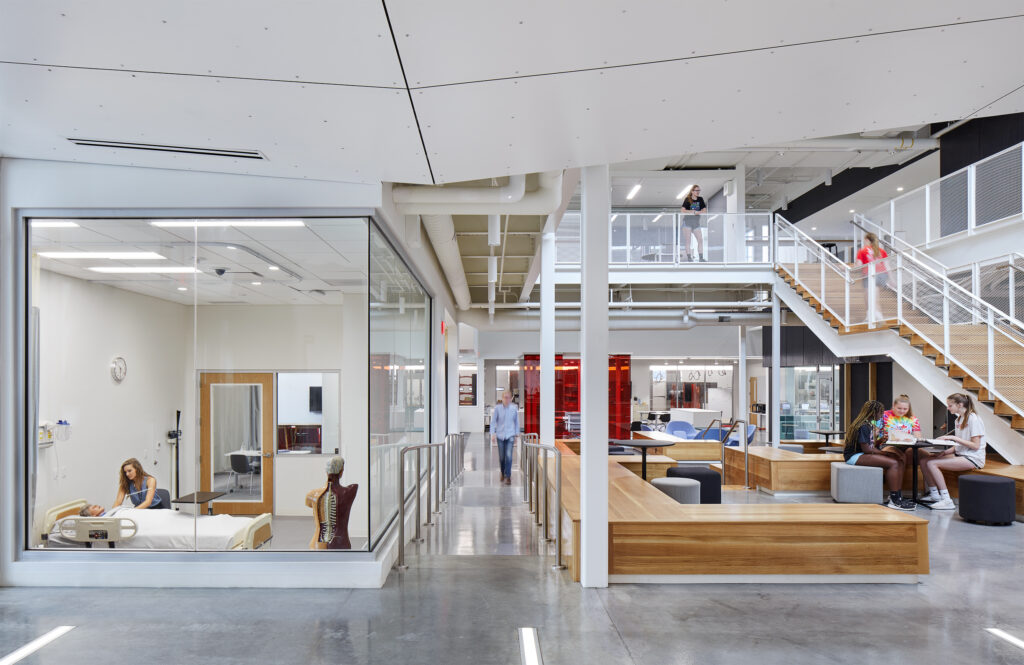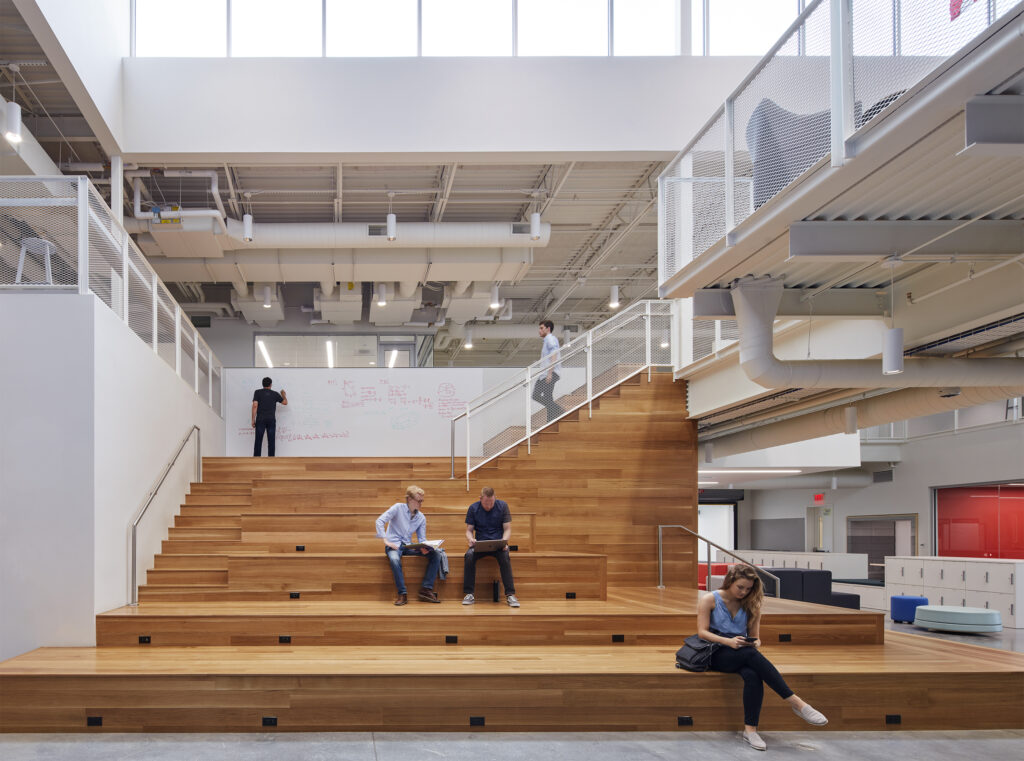CTE Spaces: Focusing on Community & Industry Needs
BVH has been involved in dozens of CTE projects in the past decade and we have seen overriding themes that are consistent markers of success…


Nebraska Center for Advanced Professional Studies at Sandy Creek is unique in its design in that rather than being defined by walls, it is defined by the absence of them. The only fully enclosed classrooms are a few science and lab spaces. For this reason thoughtful furniture selection was essential to help define open spaces and create areas for activity. In order to help define and communicate intent, we created different space typologies:
Soft furnishings throughout help in acoustical control, while mobile furnishings mean you can move your seat to better see, hear, and engage with the content and peers. We used acoustical baffles wherever we could to keep the open space’s acoustics manageable, and used glare-reducing whiteboards and screens to make sure students can see presented content.

